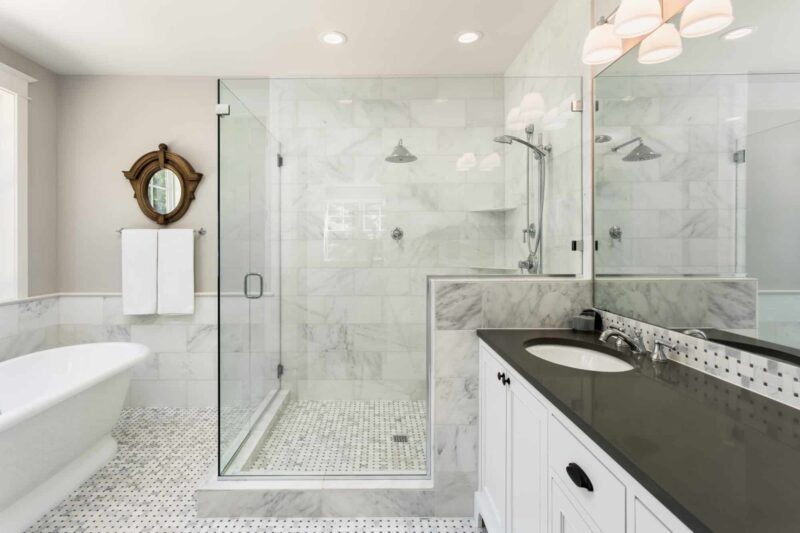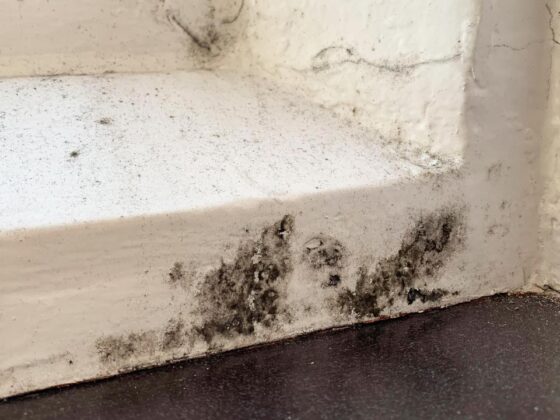Finding the right shower for a small bathroom can feel like a puzzle. There’s the limited floor area, and the challenge of getting all the essential features to fit without making it feel cramped. But fear not—there are smart solutions that can make a small bathroom both stylish and functional.
Before diving into the details, here are the key points that we will cover to help you find the perfect shower:
Key Points:
- Different shower types for small areas.
- Choosing the right door style.
- Compact shower fixtures that maximize space.
- Installation tips to avoid common mistakes.
- Practical advice for tight layouts.
Shower Types for Small Spaces
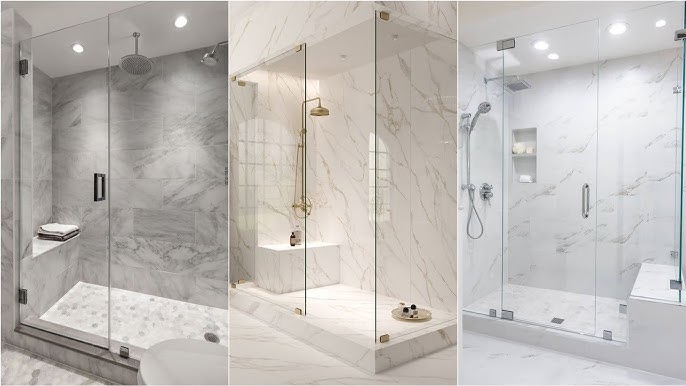
The first thing to consider when looking at showers for small spaces is the type of shower unit that suits your layout. You have several options:
1. Prefabricated Showers
Prefabricated showers for small spaces, like those offered by Geza, are an excellent solution for anyone who needs a quick and easy installation. These shower units are pre-made and ready to install within hours, saving time and avoiding the hassle of traditional built-in showers. They often come with everything you need, including the shower enclosure, fixtures, and plumbing connections. Prefab showers are particularly suited for small spaces because they are specifically designed to fit compact areas, and they often come with space-saving features like sliding doors or built-in shelving.
2. Corner Showers
Corner showers are designed to fit snugly into the corner of the bathroom, making efficient use of space. They are ideal for small bathrooms because they take up minimal floor area while still providing enough room to shower comfortably. The right-angle design allows for maximum floor space in the rest of the bathroom, making it feel less cramped. Corner showers often come with various door options like hinged, sliding, or no door at all, giving you flexibility based on the layout of your bathroom.
3. Quadrant Showers
Quadrant showers are similar to corner showers but have a curved front, which further saves space while adding a sleek, modern look. The curved design allows for a more spacious interior, while the base still fits neatly into a corner. This style minimizes sharp corners and edges, making it a great option if you have a very tight bathroom layout. Quadrant showers often feature sliding doors, which eliminate the need for extra room to open, making them even more space-efficient.
4. Walk-in Models
Walk-in showers are a great option for small spaces because they don’t require doors that swing open or closed. They usually feature a simple partition or panel to keep water from splashing into the rest of the bathroom. This design provides an open and airy feel, which can make a small bathroom appear larger. Walk-in models also eliminate the need for bulky shower frames, making the area feel less congested. For very compact spaces, a walk-in shower can be a modern and minimalist choice.
Each of these options provides a practical solution for maximizing space in small bathrooms while still maintaining functionality and style.
Door Style: Hinge, Sliding, or None?
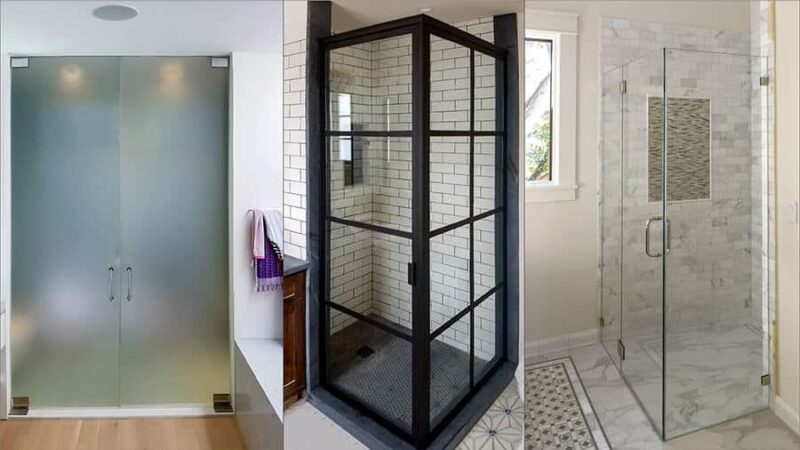
One of the key aspects to consider is the door style. Hinged doors swing outward, which can eat up space in a small bathroom. If your layout can’t accommodate that, a sliding door might be a better fit. Sliding doors glide along tracks and take up no additional room when opened. If space is really tight, you could even opt for a walk-in shower with no door at all. It’s all about finding the style that won’t make your small bathroom feel even more cramped than it already is.
Compact Fixtures that Maximize Space
Even in small bathrooms, you don’t have to compromise on style. Compact fixtures can save a surprising amount of room. For example, a wall-mounted or corner-mounted showerhead reduces the need for extra elbow space. A built-in shelf or caddy saves floor space for your toiletries, keeping everything organized and tidy. These small additions can make a big difference.
Opt for slimline thermostatic valves instead of bulky knobs—they give you precise control over water temperature without taking up extra room. Keep in mind that every square inch counts when dealing with a small area, so each fixture should have a dual purpose if possible.
Installation Tips for Small Bathrooms
Consider the flow of the room—placing the shower in a corner often works best because it maximizes the open space in the middle of the room. Also, think about where the plumbing is located, as moving pipes around can add to your renovation costs.
A prefabricated shower unit can be a lifesaver here. Prefab models often come with all the plumbing fittings pre-installed, so you won’t need to worry about aligning pipes perfectly. Plus, installation is a breeze compared to custom-built showers.
Practical Advice for Tight Layouts
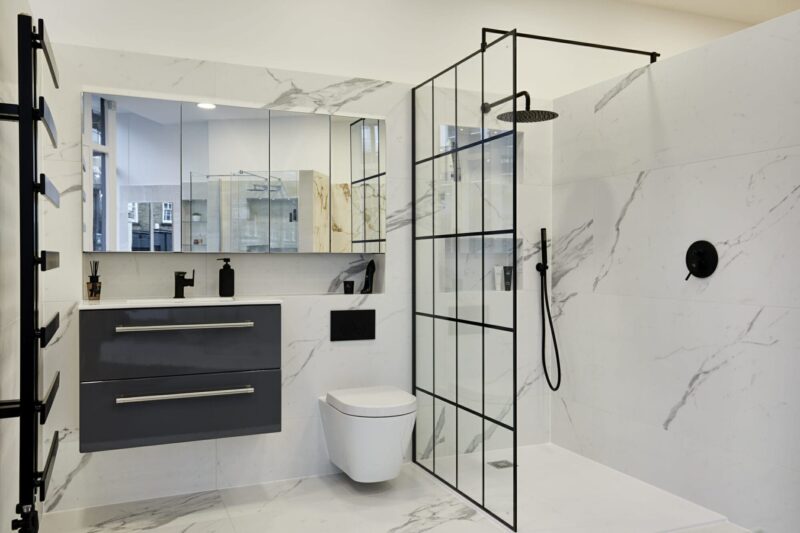
Here’s a pro tip: use light-colored tiles or walls to make your small space feel larger. Light colors reflect more light, which visually opens up the room. Also, installing a clear glass shower door instead of frosted or opaque glass can give the illusion of more space because it removes visual barriers in the room.
Another useful trick is to keep everything off the floor. Wall-mounted shelves, towel racks, and even the shower controls can give the illusion of more space by keeping the floor area clean and open.
FAQ Section
How can I make my bathroom feel bigger with a small shower?
Use clear glass doors and light-colored walls to make the room feel more spacious. Keep the floor clear by using wall-mounted fixtures.
What type of shower is easiest to install in small spaces?
Prefabricated shower units are the easiest because they are designed to be installed quickly, without the need for custom plumbing.
Can I fit a walk-in shower in a small bathroom?
Yes, walk-in showers can be a great fit for small spaces, especially if you choose a corner layout with a minimalist design.
Should I choose a sliding or hinged door for my small shower?
A sliding door is usually better for small areas because it doesn’t take up any extra space when opened, unlike a hinged door.
What are some space-saving features for a small shower?
Wall-mounted showerheads, built-in shelving, and slimline thermostatic valves are all great options to save space.
Conclusion
Finding the right shower option for a small bathroom doesn’t have to be a struggle. By considering your layout, choosing the right type of shower, and paying attention to the little details, you can create a bathroom that’s functional and stylish. Whether you go for a prefabricated shower unit or opt for custom features, there are plenty of ways to maximize the space you have without feeling cramped.
Now that you have a clear picture, it’s time to start planning the best shower setup for your small space. With the right choices, your small bathroom can feel open, modern, and surprisingly roomy.

